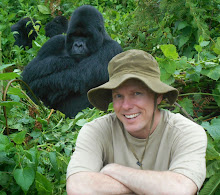
When collecting data on Grand Isle, Taylor Kirschenfeld, an environmental official from Escambia, Florida, scoured beaches bagging oil and sand, feather and fin; he collected for posterity, he must have assumed, for future generations to continually evaluate scientific data to the benefit of mankind. It must have stuck him in the gut when his brain made the connection that eventually lead Mr. Kirschenfeld to defy orders from a government agency.
Kirschenfeld, also an adjunct instructor in enviro studies at the U of W Florida, found something odd in directions from NOAA (the National Oceanic and Atmospheric Administration). It turned out NOAA procedure had his baggies bound for a labratory in Texas, TDI-Brooks International, whose number one clientele happens to be: you guessed it, the oil companies. Kirschenfeld sought a waiver to send his samples to a Florida lab also licensed to conduct such tests.
“Everywhere you look, if you look, you start seeing these conflicts of interest in how this disaster is getting handled,” he told the NY Times. “I’m not a conspiracy theorist, but there is just too much overlap between these people.” He's also concerned by another rule. Local animal rescue workers are volunteering to treat birds and to collect data that will be used to calculate penalties for the spill, but federal officials say it has to be done by a company hired by BP! (also NYT)
Politics slithers through all of space/time, and most of us stomach it best we can, but why would NOAA engage in such a relationship? A skeptic could say it has to do with influence peddling, with former BP executives in our government and the relationships they cultivate. People like Sylvia V. Baca, the deputy assistant secretary for land and minerals management at the Interior Department. She spent 8 years at BP and previously served in the Clinton Administration, and her responsibilities include oversight of the oil and gas, mining and renewable energy operations on public and Indian Lands. Who has the most $ in that mix? It's a common misconception that the oil field runs with only one party.
These thoughts as I traverse terra firma, walking in New Orleans. Passed sundown, I've parked my truck at the bitter end of St. Charles St., beyond railroad tracks in a gravel lot. Basically lost, I check the map to discover I'm next to the river, and sure enough there's a levee a few feet away. I walk to the top and there's the river in a gap between trees, lit by celestials and by the deck lights of a bulk grain-carrier on the opposite bank. There's a cacophony of frog noise at the base. I descend the hill, but the path is fenced and locked.
I head north-east instead, and up St. Charles St., ducking in and out of the trolley way until I find Oak, and people abound in the streets, old timers at a table by the coffee shop, a pretty chill setting. I arrive at the Maple Leaf, a relic of a place, where Rebirth Brass Band plays with energy to a mixed, excited crowd. It's a fantastic show but I've got class in the morning and should be studying. I slip out around midnight, and on the way home I avoid traffic by hugging the levee on a deserted street, passing beneath the Huey P. Long bridge where a change in rules takes place for the boats below. Then houses appear to the right in a 20 mph zone, and I'm creeping, thinking I should be in a taxi. The houses are nice, the setting bucolic, and there's a country club, a huge complex, a castle both defended and threatened by the river. I don't see a traffic light until I'm nearly at the airport. It's a tremendous feat of navigation.

No comments:
Post a Comment